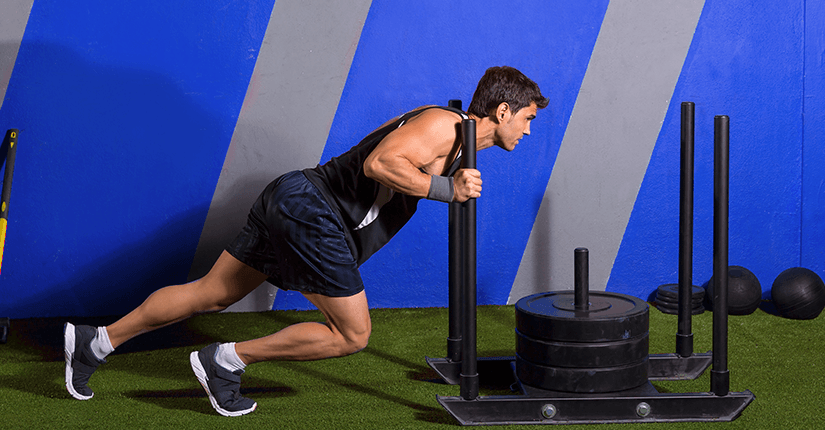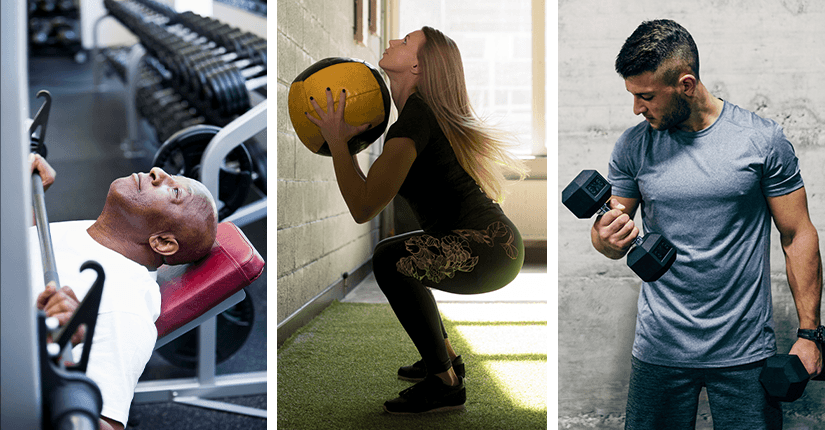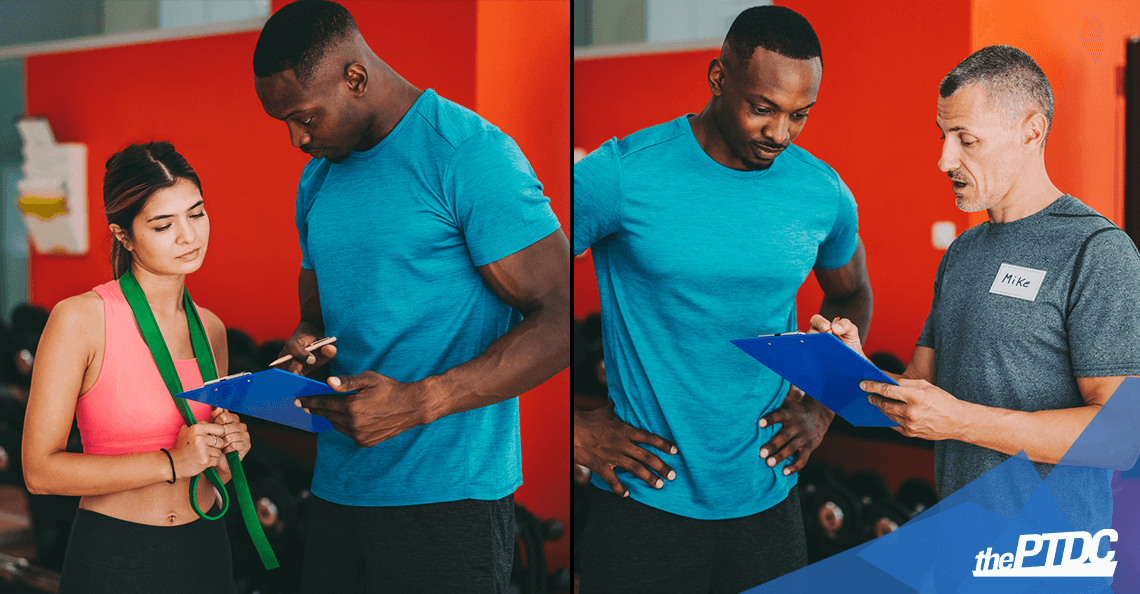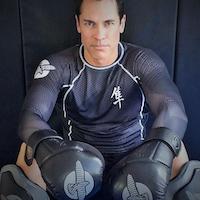Every personal trainer has gaps in their knowledge and skill set.
Every personal trainer, sooner or later, finds their own workouts getting stale or maybe even inadequate for their needs or goals.
But very few personal trainers take the logical next step: hiring a trainer to oversee their programming and teach them what they don’t know.
I’ve been on both sides of the transaction.
I’ve been the fitness coach other coaches hired to write their programs and help them reach their fitness goals, and I’ve hired coaches to help me develop skills it would’ve taken me much longer to master on my own—if I could’ve mastered them at all.
I believe every trainer needs a trainer, including you. Let me tell you why …
1. Hiring a trainer exposes the blind spots in your knowledge and programming
Most trainers, like most people in the gym, tend to avoid things they don't like to do.
That’s the first benefit of hiring a coach: You’ll probably use exercises and training techniques you’d never put in your own programs.
Ask yourself: Why don't you do those things?
If it’s because you’re too busy to write good programs for yourself, hiring a coach solves the problem.
But if it’s because you’re not well-versed in exercise science, that’s a much bigger issue.
A coach who doesn’t understand the underlying principles of strength training is going to struggle with both programming and communication.
Even if you’re a good coach, you won’t be able to explain to your clients why you do certain things—because you don’t really know.
Working with a coach can help expose those holes in your knowledge so you can start filling them. (Consider reading up on the five exercise principles every trainer should know.)
2. Hiring a trainer exposes the gaps in your fitness
One gap I often see is a lack of energy systems development—what we usually call cardio—and in particular the aerobic system.
A lot of trainers will only do traditional anaerobic intervals, where you go hard for 30 seconds and then recover for 60 to 90 seconds, and it works well.
But if that’s all you do, I think you are missing a window of opportunity in your cardio development. Aerobic training, especially the capacity of the system, can help build a bigger gas tank as well as help you recover faster from bouts of higher-intensity work.

Hiring a fitness coach helps you identify and fill gaps in your fitness. A common gap among trainers is aerobic conditioning.
In Phase One of Online Trainer Coaching, I have everyone start with low-intensity, steady-state cardio to build up their aerobic base so they are better prepared for the subsequent interval training.
Then in Phase Two, they advance to aerobic power intervals, where they push themselves for three minutes, and then begin the next interval when their heart rate has sufficiently recovered.
And finally, in Phase Three, they graduate to the high-intensity anaerobic intervals because they are now well prepared to perform high-quality work, repetitively.
If you’ve been neglecting these aspects of your energy systems development, you’ll have to catch up in a hurry.
When you do, you’ll realize your workouts become more efficient. A higher level of conditioning allows you to pack more training into the same amount of time because you will recover faster from one set to the next.
Whatever your goals, it’s easier to reach them when you can do more work.
Another gap tends to be power training.
It’s important to understand if you train older clients. Power is the fitness quality that diminishes fastest as we age. So, you should know how to safely and effectively program it for those clients.
But it’s also an important component of athleticism, which is why you should consider including it in your own workouts.
Like energy systems development, power training can help you reach seemingly unrelated goals like hypertrophy or fat loss.
I’ll explain why …
3. Hiring a trainer helps you understand what it means to push yourself
Whether your training goal is to build muscle or lose fat, the biggest driving force is effort. Effort coincides closely with motor unit recruitment, so a high level of effort will activate the high-threshold motor units, which happen to control the most muscle fibers.
You can achieve a high level of motor unit recruitment in three different ways:

Activate motor-unit recruitment three ways: Push a heavy load slowly, move a lighter load quickly, or lift a moderately heavy load to fatigue.
- Push a heavy load at a slow velocity (even though you’re trying to move it fast).
- Move a lighter load at a very, very fast speed.
- Lift a moderately heavy load until your muscles are completely fatigued (or relatively close to it).
The first is what you’d focus on if you were training for maximum strength. The second would include things like medicine-ball throws and plyometrics. And the third is what we’d recognize as more traditional hypertrophy training.
Many people, even if their goal is fat loss, could benefit from periodically including a hypertrophy phase in their programs. This type of training puts a greater emphasis on mechanical tension of muscles at a more localized level, which is great for stimulating the development of lean muscle mass.
More lean mass, in turn, helps improve body composition while also increasing your potential to get stronger.
When those trainers do my program in Online Trainer Coaching, they experience a level of localized muscular effort many have never tapped into before.
Then there are the coaches who come from a group fitness background. For them, training is often about two things: lots of exercise variety and chasing fatigue.
They’re used to doing lots of volume with the goal of making their clients as tired and sweaty as possible, and they’re used to changing up their exercises every day.
Some of them are shocked when they see the Online Trainer Coaching programs. They’ll say, “Wait. We’re going to do the same workout for the next four weeks?”
It’s so hard for them to wrap their heads around the idea of not doing a different workout every time they go to the gym.
That’s what they do in the group fitness world. But that’s not really a training program.
Training involves having a plan which is designed toward achieving a goal. It’s about working to get better at key movement patterns, to own them.
And it means incorporating the principle of progressive overload—increasing the load, adding sets or reps, decreasing rest periods, or some combination of manipulating these things.
That brings me to a slightly more sensitive reason to work with a coach.
4. Hiring a trainer can help you look like a trainer
Talking about what a trainer should “look like” is, in some ways, a disservice to the fitness profession.
We shouldn’t keep good trainers out of the industry because they don’t look like fitness models. I totally agree with that.
But we also end up with trainers who not only aren’t in shape, but also haven’t spent much time or effort trying to actually get in shape. Which means they don’t really have an innate understanding how to help other people get in shape.
I always felt like I was my business card. I wanted my clients to see me as someone who’s done some version of everything I’m asking them to do.
Again, I’m not saying every trainer has to achieve a specific level of strength or muscularity or body fat.
But I am saying you should know what it feels like to push yourself (at least for a short period of time) to maximize your potential in those things.
5. Hiring a trainer is an opportunity to learn from the best
If you truly want to get better at something, you should hire somebody better and/or smarter than you to teach you.
I’ve been a fitness trainer since 1996. Not to brag, but I’ve become really good at programming.
When another trainer hires me, it’s because they know I’m going to write a better program than they could ever write for themselves.
It’s going to be formulated around the evidence and account for every acute variable. Each component will be relevant to the client’s overall goal while accommodating for their current fitness level, movement restrictions and even the logistics of their training environment. Almost every exercise I select in one phase will help dictate the exercises I select in the next.
That said, there’s a lot I still don’t know.










